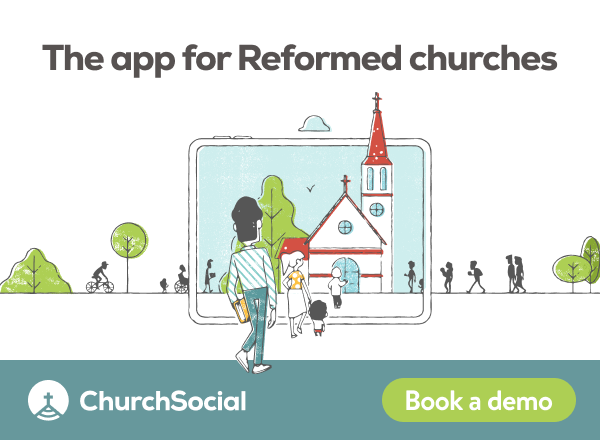Decisive Moments – The Coronation of Charlemagne


Power struggles appear everywhere in history. One of the epic power struggles was the one between popes and kings. As we come into the early Middle Ages, both are front and centre on the European stage. Who will dominate? It’s an issue that will have huge implications further down the track.
Over time, the bishop of Rome became a more powerful figure in the Western church. He came to be regarded as the successor of Peter and the vicar (or representative) of Christ on earth. This bishop becomes known as “Pope.” There’s double-speak surrounding him. On the one hand, he is said to be an equal with the other bishops. But on the other hand, because he’s the successor of Peter, he’s said to be “the first among equals” (primus inter pares). The hard reality is that the pope becomes the undisputed earthly head of the western Catholic Church.
The political background is important here too. In AD 476, the Western Roman Empire disintegrated and became several disconnected kingdoms. Meanwhile, thanks to the efforts of early missionaries, the gospel penetrated into northern Europe. Over in the Arabian peninsula, Muhammad (570-632) invented Islam and gathered followers. He united the Arabian tribes and they went to war. By 750, most of the Middle East and northern Africa were controlled by the Muslims. They even made progress into present-day Spain and France (in 717). A divided Europe faced a huge threat from a militant Islamic presence.
In what we today call Germany, there was a group of tribes known as the Franks. They banded together and formed a kingdom. Eventually, the Franks became Christians, at least in name. In 732, a Frankish ruler named Charles Martel went to battle against the Muslims who had invaded France. He was victorious and pushed the Muslim armies back. However, the Islamic threat remained, particularly in Spain.
Enter Charlemagne (748-814) – his name comes into English from French, Charles le Magne – Charles the Great. He was a grandson of Charles Martel and named after him. He became king of the Franks in 768 and king of the Lombards in 774.
Interestingly, history has passed down to us a description of Charlemagne. He was tall, somewhere between 6 and 6 foot 5 inches. We’re told that he “had a round head, large and lively eyes, a slightly larger nose than usual, white but still attractive hair, a bright and cheerful expression, a short and fat neck.” He was stubborn by nature. Doctors told him to stop eating roasted meat and just eat it boiled, but he refused to listen. Who can blame him? It didn’t seem to hurt his longevity, seeing as how he made it to the ripe old age (for that time) of 66.
Nourished by his roast meat, Charlemagne conquered much of northern and western Europe. His powerful kingdom encompassed about half of Europe. Charlemagne and his armies were able to keep the Islamic forces at bay on the Iberian Peninsula.
In late 800, Charlemagne was in Rome. He had come there to assist Pope Leo III in dealing with allegations of corruption. After that was accomplished, he was waiting in Rome for better weather to return home across the Alps.
It was Christmas Day, 800. Charlemagne was praying in St. Peter’s church. He later claims to have had no idea of what was about to happen. After he had finished praying, Pope Leo III approached and placed a crown on his head. He was declared to be “Emperor of the Romans.” The crowd, who had been prepared beforehand, shouted out three times, “To Charles Augustus, crowned by God, great and peace-giving emperor of the Romans, life and victory!” Not only did Charlemagne allegedly not see this coming, he also claimed he didn’t want it.
Regardless of how he felt about it, he accepted it and Charlemagne was now the first Holy Roman Emperor. This marked the beginning of the Holy Roman Empire, a political entity which would last until 1806, over a thousand years. The Holy Roman Empire would come to feature quite centrally in the story of the Reformation in the 1500s.
But this event is also decisive for what it said about the relationship between popes and kings. Pope Leo III crowned Charlemagne – with that act, he claimed the power to coronate. Kings should be under popes. According to Mark Noll, however:
In the terms of medieval society, Charlemagne never considered himself a vassal of the pope. Rather, he held himself to be responsible to God alone for the welfare of his people. But whatever Charlemagne thought of his own role, the link with Rome was now secure. (Turning Points, p.121).
As time marches on, this issue is by no means as settled as popes like Leo III might have wished. In retrospect, one can imagine that, in his later years, King Henry VIII of England would have urged Charlemagne to hurl his Christmas present right back at the pope. Not getting the divorce he wanted, Henry rejected the authority of the pope and established himself as the titular head of the Church of England in 1534.
Today when people prattle on about “separation of church and state,” usually they’re not thinking of Pope Leo III and Charlemagne. Typically what they mean is that any reference to religion has to be kept out of politics (which is actually impossible). That isn’t the historical meaning of “separation of church and state.” It’s properly understood as meaning that the church has no business crowning monarchs or controlling political affairs. The reverse holds true as well: the state has no business dictating the spiritual affairs of the church. We didn’t get here easily. It took a long time for Christianity to untangle the mess Pope Leo III gave as his Christmas present in 800.



